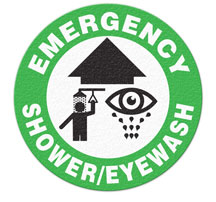| The Home page of ILPI's Safety Data Sheet (SDS) Resource, the leader in SDS information since 1995! | |
| The history and philosophy behind this resource. | |
| A curated collection of books and reference materials concerning Safety Data Sheets and closely related topics. | |
| Paste your plain text SDS into the SDS-Demystifier, and it will be converted into a hypertext-enriched document with links to detailed explanations of each key term. | |
| An extensive list of frequently asked questions about Safety Data Sheets including regulations, content, compliance, and more. | |
| A humorous take on Safety Data Sheet jargon. Fill in the blanks on our entry form to generate a personalized Unsafety Data Sheet to share with your coworkers. | |
| Since 1995, we've maintained this massive curated list of the best places to find Safety Data Sheets on the Internet. | |
| You are here! Way more than a glossary, this hypertext-enhanced resource covers hundreds of SDS-related terms and expert knowledge. Each entry includes both the SDS relevance and links to additional authoritative resources. | |
| Archived results of Safety Data Sheet related polls taken by some of our millions of site visitors | |
| The OSHA regulations behind SDS regulations, including the inspection guidelines and over 400 official interpretations letters under the Hazard Communication Standard | |
| Commercial suppliers of SDS authoring and management software as well as cloud compliance services. | |
| Commercial companies that will create SDS's for your specific needs as well as SDS translation companies. |

Safety signs, banners, and scoreboards? Get yours at Safety Emporium!

Ensure a safe workplace with antislip floor marking signs from Safety Emporium.
Definitions
A chemical formula expresses the exact composition of a molecule or substance using the chemical abbreviations of the chemical elements.
A chemical element is a substance that can not be separated into simpler substances by chemical means. There are currently 118 known chemical elements of which 94 are naturally occurring (albeit some of those occur only in minuscule quantities). Common examples of chemical elements include carbon, hydrogen, chlorine, sodium and iron.
The smallest basic unit of a chemical element that can enter into chemical reactions is called an atom.
Additional Info
There are several different ways of expressing chemical formulas:
-
Molecular formulas use the exact number of atoms of each element present in the smallest unit of the substance. For example, benzene is a molecule composed of six carbon and six hydrogen atoms and has a formula C6H6.
Note: two different materials may share the same molecular formula. For example, both acetone (also called 2-propanone) and propionaldehyde (also called propanal) share the same molecular formula of C3H6O, but have different arrangements of atoms in the molecules. These are called structural isomers. Structural isomers usually have different chemical and physical properties:

-
Empirical formulas use the simplest (lowest) whole-number ratio of the elements that are present. For example, the molecular formula of benzene is C6H6, but the empirical formula is simply CH.
Note: An even larger number of compounds can share the same empirical formula. For example, acetylene (a gas) has the molecular formula C2H2, but has the same empirical formula as benzene (a liquid), CH.
-
Structural formulas are a version of a molecular formulas in which the connectivity of the atoms is implied. For example, acetone, which has a molecular formula of C3H6O, can also be expressed as (CH3)CO(CH3) or (CH3)2CO. For convenience, chemists often sketch these. Those shown below for acetone all express the same structure:

-
Finally, while you probably won't see these on SDS's, chemists sometimes use structural models to represent the arrangement of atoms in a molecule (the molecular stucture). Again, these are all equivalent ways of drawing the structure of acetone:


Safety Emporium has all kinds of lab equipment such as this incubating rocking shakers and more.
SDS Relevance
Safety Data Sheets provide key information about the chemicals that you use in your workplace. Be sure to read and understand the SDS of every substance you use or are exposed to at work before you work with the material.
Recognize that a molecular formula is not necessarily a unique identifier for a chemical substance. Do not rely on molecular formulas alone to label or identify a substance. For example, the molecular formulas of glucose (a form of sugar) and 1,3-dihydroxy-2-propanone dimer (an eye and skin irritant) are identical, C6H12O6.
Chemical names are not always reliable because a common chemical may be known by several different names. For example, methylene chloride, dichloromethane and methylenebichloride are common names for the same substance, CH2Cl2. If you need a unique identifier, use the CAS Registry Number as well as molecular formula and name.
Further Reading
- Visit WebElements for a complete list of the chemical elements, their properties and a whole lot more!
- Search for chemical physical data by chemical formula in the NIST Chemistry WebBook.
- ChemSpider lets you search for information by chemical formula, name, and more.
- Abbreviations And Acronyms Of Chemical Compounds at the U of Split.
- PubChem is now the NLM's single source for chemical information. ChemIDplus and the Drug Information Portal were retired as of December 12, 2022. Their information is now available through PubChem.
- WolframAlpha is a computational search engine that can return all kinds of chemical data, including manipulations and explanations of chemical formulas.
See also: CAS Registry Number, mole.